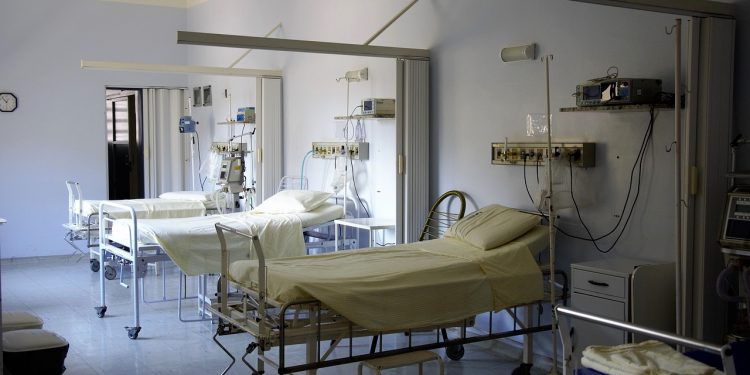Number of hospitalised still falling

14 days after the gradual reopening of Denmark, the figures do not show an alarming increase in those needing hospital care, on average between 20 and 40 new COVID-19 patients are hospitalised.
The article continues below.
By Bente D. Knudsen
The CEO of the Danish Health Board said at the press meeting held before Easter, where Danish Prime Minister Mette Frederiksen announced the gradual reopening of the Danish society with the reopening of the schools for the smaller classes and the childcare facilities:
”When we start reopening the society, we will expect to see an increase in spread, as the virus is still active in our population, what is important, is that we do not see a large increase in those hospitalised.”
The aim of the health authorities during the reopening phase is to continue to monitor that the Danish hospital sector can cope with the number of hospitalised COVID-19 patients.
Two weeks into the reopening, the figures are not alarming, even if the reproductive rate has gone up from 0.6 to 0.9 (take note that SSI says this figure 0.9, has a 95 percent probability interval of 0.7 to 1).
The article continues below.
The most recent reproductive rate estimate dates from the period of 19 to 24 April (0.9) and the aim is to keep it close to, or under, 1.
As at 1 May there are 249 hospitalised, of which 61 are in intensive care and of those 44 need help from a ventilator.
These figures are down by 6 compared to the day before when 255 were hospitalised, 62 were in intensive care and 50 in a ventilator.
Since the outbreak in March 2020, a total of 205,937 have been tested, 9,264 have been confirmed infected with COVID-19 and 460 have died with COVID-19.
The Danish Institute for infectious disease, SSI, confirm what has been suspected for a while; COVID-19 is much more dangerous to elderly people than the regular flu.
The article continues below.
In a recent analysis, comparing the death rates during the flu seasons 2014 to 2019 to the actual COVID-19 outbreak, SSI found that most of the deceased were to be found in the age group 60 and up; and that the older a person is, the higher is the risk of dying; 40.7 percent of those confirmed infected over the age of 90 have died, 25 percent in the age group 80 – 89 and 15.2 percent in the age group 70 to 79.
Compared to the average death rates of the recent flu seasons, the death rate of the age group 90 + ( for those confirmed sick with the flu) was between 18.8 and 25.6 percent, for the age group 80 to 89 it was between 6.4 and 13.9 percent and for the age group 70 to 79 it was 4.7 to 6.7 percent.
The article continues below.
The Danish Government is still negotiating the reopening measures of phase two with the rest of parliament, these should become public sometime next week as the current deadline for the ongoing measures was set at 10 May.
Not much is known at present about the outcome, speculations are that the borders will remain closed and not reopened without coordination with Denmark’s neighbouring countries and the rest of the EU.
The latest news from the Danish Health Board is that the restrictions concerning visiting elderly family members in the elderly homes and institutions are to be lifted, so that family members can visit in all security, for instance in special sections ( tents could be set up in the court yards) and with distance measures in place such as plastic shields.
Meanwhile this week IKEA reopened its 5 Danish shops, which prompted the authorities to increase the m2 requirement per person in them from 4m2 to 20 m2 for shops above 10,000 m2
Requirements for shops depend on their size:
Below 2,000 m2 one person per 4 m2
2,000 to 4,999 m2 one person per 8 m2
5,000 to 9,999 m2 one person per 10m2
More than 10,000 m2 one person per 20 m2
People should be able to pass each other in the main passageways with a distance of 2 meters.
Next week we will know more.
Support our magazine with a contribution of any size
We do not want to put up a pay-wall, so we need your support and if you find our content relevant and worthwhile, we would value any contribution, however big or small, as a token of your appreciation of our efforts.
How to support:
Transfer any contribution to our bank account at: Your Danish Life/ Danish Expat Media Aps
Danske Bank Account number: 3409 11405673
IBAN: DK68 3000 0011 4056 73
or MobilePay to 2144 1224
Message: Support

